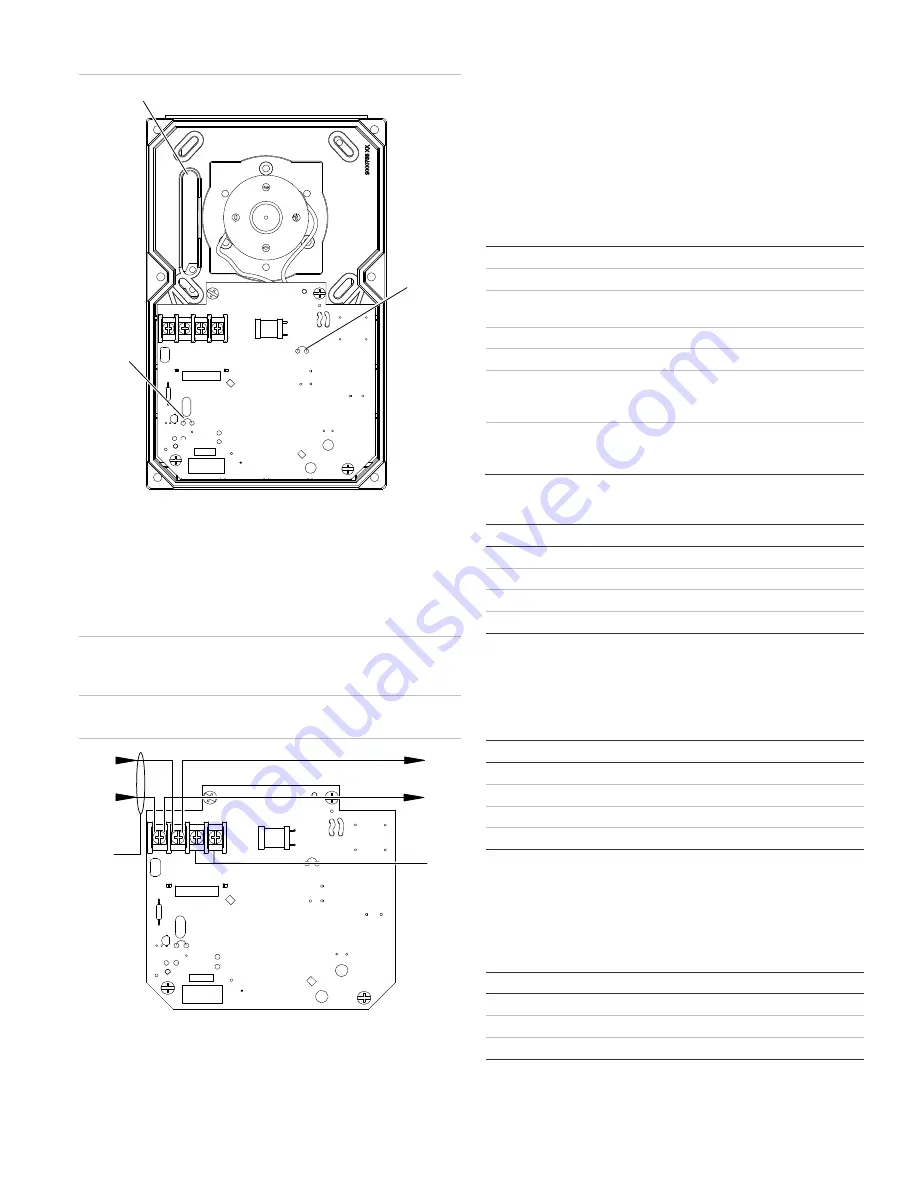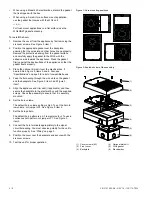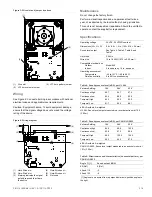
P/N 3101999-ML • REV 1.0 • ISS 11APR12
3 / 8
Figure 3: Wire slot and jumper locations
JP3
(1)
(2)
(3)
JP1
(1) Wire
slot
(2) JP3 horn volume jumper
(3) JP1 horn pattern jumper
Wiring
See Figure 4. Connect all wiring in accordance with national
electrical codes and applicable local requirements.
Caution:
Equipment hazard. To avoid equipment damage,
ensure that the signal voltage does not exceed the voltage
rating of the device.
Figure 4: Wiring diagram
(1)
(2)
(4)
(5)
(6)
JP3
JP1
(3)
(1) Horn-Strobe
in
−
(2) Horn-Strobe in +
(3) Marking indicates the signal
polarity required to activate
the device
(4) Horn-Strobe out –
(5) Horn-Strobe out +
(6) Not used
Maintenance
Do not change the factory finish.
Perform a visual inspection and an operational test twice a
year, or as directed by the local authority having jurisdiction.
This unit is not serviceable or repairable. Should the unit fail to
operate, contact the supplier for replacement.
Specifications
Operating voltage
24 VDC, 24 VFWR nominal
Dimensions (W × H × D)
5.6 × 8.5 × 1.4 in. (142 × 216 × 36 mm)
Sound level output
See Table 4, Table 5, Table 6, and
Table 7
Horn tone
3.2 kHz
Wire size
12 to 18 AWG (0.75 to 2.50 mm²)
Compatible electrical box
Outdoor
Indoor
Model 449
4 in. square by 1.5 in. deep box
Operating environment
Temperature
Relative
humidity
−
40 to 151°F (
−
40 to 66°C)
0 to 95% noncondensing
Table 4: Sound pressure level (dBA), per UL 464
Volume Setting
16V
24V
33V
Continuous High
89.7
94.7
97.4
Continuous Low
85.4
89.5
92.5
Temporal High
84.2
90.5
93.5
Temporal Low
81.7
85.4
88.1
dBA = Decibels, A-weighted.
UL 464: Sound level output measured in a reverberant room at 10 ft.
(3.05m).
Table 5: Sound pressure level (dBA), per CAN/ULC-S525
Volume Setting
16V
24V
33V
Continuous High
94.0
99.6
102.9
Continuous Low
92.8
97.2
98.6
Temporal High
96.5
100.5
104.2
Temporal Low
90.3
94.2
97.0
dBA = Decibels, A-weighted.
CAN/ULC-S525: Sound level output measured in an anechoic room at
10 ft. (3.05m).
Table 6: Directional sound characteristics (horizontal pattern), per
CAN/ULC-S525
Angle (°) [1]
Sound output (dBA)
90 (Ref)
0 (Ref)
60 and 115
−
3
45 and 132
−
6
[1] Angles are measured from a perpendicular axis; positive angles to
the right.









